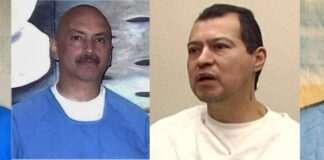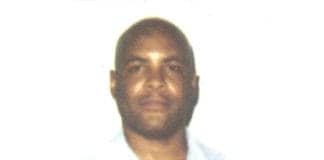Tags Short corridor
Tag: short corridor
Decades of torture, hundreds of men, weeks of starvation – and...
Celebrating the 10th anniversary of the first of three California Hunger Strikes, Bay View Editor Nube Brown interviews Paul Redd and Kubwa Jitu, captured and labeled the worst of the worst, sharing a combined 66 plus years total in solitary confinement, and revealing their humanity to be the Best of the Best.
The four California prisoner class representatives call for solidarity and change
Collectively, we are an empowered, mighty force that can positively change this entire corrupt system into a system that actually benefits prisoners and thereby the public as a whole.
From SHU to mainline, you will be tested
This is the advice I share with anyone getting out of the SHU and going into GP (general population). The first thing I did when I was released to GP was to find out all I could about the mainline and the programs that they offered. You want to get connected to as many self-help programs as you can. Something else that helped me to transition from SHU to mainline was to surround myself with positive people and keep myself busy.
Prison artist uses ‘visual language’ to inspire his brothers
I’ve learned to use the term “visual language,” meaning I try my best to let my art creations speak to the people in a way they’ll feel and deeply understand intuitively just by viewing it. I really hope you like this composition. This art is simply titled “Help Me,” being a composition. You can see everything in it is arranged in relation to each other, especially the pain we endure as people of color.
What is solitary confinement?
At first glance the question, What is solitary confinement? appears to be rhetorical, if not insulting, but you would be surprised, if not incredulous, how many prison rights activists are at a loss when I pose it to them. Even more perplexing, many prisoners are only able to provide the standard but antiquated response, which is: a prisoner in a cell behind a solid door, in which he/she is isolated from other prisoners and human contact.
Chess vs. checkers
Life is like a game of chess and checkers. Many of us play checkers. And many of us think we’re playing chess, but, in practice, we’re actually playing checkers. So it should be of no surprise to any of you when I say, most poor people play checkers, prisoners in particular. Now what does this analogy imply? Most people make decisions in life without thinking ahead or assessing the ramifications of their decisions, especially prisoners!
Review Board suggests Pelican Bay prisoner stop political writing for favorable...
I was validated on the mere basis of my New Afrikan revolutionary beliefs and political activities, expediently defined and treated as “gang activity.” I was literally told that my political writings were in the hands of others and would I consider not writing such because of their “concerns.” Naturally I refused to conform to their illegal requests, but a clear message was delivered to me: CDCR prefers that prisoners not evolve politically but to remain gang oriented inmates.
Prisoners and advocacy groups oppose Sen. Loni Hancock’s prison reform bill,...
California prisoners, who suspended their 2013 hunger strike, the largest such strike in history, after two legislative leaders promised bills addressing the strikers' demands, are now opposing one of those bills. Sen. Loni Hancock's Senate Bill 892 would give prison regulations on “gang validation” and the new step-down program the force of law. And it would leave California with the largest population of prisoners in solitary confinement of any country in the world or state in the United States at enormous cost to the taxpayers.
Arturo Castellanos’ update on Pelican Bay’s response to hunger strike demands...
Two letters from Arturo Castellanos, one of the four main SHU reps at Pelican Bay State Prison: March 3, 2014 – I’m writing this brief article about the positive outcomes during our meetings with Sacramento and PBSP officials since the end of our last hunger strike. March 23, 2014 – I write this to update you on the positive cooperation we received from this new administration and on the Departmental Review Board hearings.
CDCR still fabricates evidence, so what’s our Plan B to free...
The heart of our oppression – indefinite housing in SHU – remains fully intact and has yet to be ruptured. Our Plan B should focus solely on their sacred cow and work toward getting fixed dates for SHU placement. This is where our real struggle will be. Only when our future hunger strikes and work strikes are coupled with strong activism in our communities will we have a successful Plan B.
My friend Todd Ashker
Todd Ashker is on hunger strike in Pelican Bay. I know him as a thoughtful human being who has dedicated his life to peaceful change, to helping his fellow prisoners by learning the law and sharing his knowledge. He was not that way 30 years ago when he first went to prison. He admits that. But any brain scientist will tell you that no man in his 40s is the same man he was in his teens or early 20s.
Corcoran 2011 hunger strike petitioner needs legal help re retaliation, medical...
I was a petitioner during the Dec. 28, 2011, hunger strike here at Corcoran State Prison. I suffered a misfortune at the hands of CDCR in Kern Valley State Prison. I am back at Corcoran State Prison Administrative Segregation Unit and nothing that was promised to us did we ever receive, and to be honest the living conditions have even worsened and many of us have been subjected to harassment and vindictive and retaliatory behavior.
Why did five Pelican Bay guards beat two elderly Black prisoners...
These particular officials who set out to provoke violence by attacking prisoners are not only committing criminal acts but grossly violate the authority entrusted to them by the public. For too long CDCR and PBSP have been abusing their authority, which each official took an oath to uphold – arbitrarily applying their prejudiced and racist views by attacking prisoners.
CDCR’s $9.2 billion corruption machine vs. Prison Human Rights Movement
Sitawa Nantambu Jamaa, PBSP-SHU Short Corridor Collective – Aug. 14, 2013 – I would like to reiterate that the Agreement to End All Hostilities, issued Aug. 12, 2012, is significant for all prisoners because CDCR (California Department of Corrections and Rehabilitation) has encouraged prisoners in their 33 prisons to not only engage in self-destructive behavior but has also helped heighten racial hostilities – the catalyst for internal warfare, racial warfare and gang warfare – all of which has been magnified inside the prisons and throughout our communities.
Corcoran SHU hunger strike: The riot team was ready for full-scale...
Here at Corcoran State Prison, 4B1L Short Corridor on July 11, 2013, at approximately 11 a.m., Sgt. Vogel and two of his COs (correctional officers) entered the Short Corridor with a list of names of guys from all racial groups and went door to door informing them that they were moving immediately – no ifs, ands or buts – willingly or by force!
Hunger strike leaders thrown in the hole ‘til they resume eating
This message came to the Bay View on a postcard received July 15, 2013. In response to this message emailed to hunger strike supporters, Carol Stickman, attorney with Legal Services for Prisoners with Children and a member of the hunger strike leaders’ legal team, wrote: “Our legal team is going up today to speak with our plaintiffs on Tuesday/Wednesday. We should have more info then.”
Paul Redd: Prisoners, unite! Community, stand with us!
Paraphrasing Bro Mumia’s words: Jailhouse lawyers must look beyond the state’s imprisoning bars, bricks and cement to build relationships with others in the so-called “free” world to further and support social movements that spread liberating and progressive space within society. We behind the concrete walls start this new progressive movement. But we need the outside support of our communities to stand with us.
Sensory deprivation: an unnatural death
The following assessment is far from being complete; it is a brief analysis compelled by a question an activist posed to me: How does sensory deprivation (S.D.) impact the psyche of those prisoners who have been subjected to long-term solitary confinement? Actually, this text is but a modified letter that I wrote in response to the above question.
The CDCr-CCPOA lying game: Prisoners united, women and men, know the...
The CDCr are masters at pulling the wool over the eyes of the California taxpayers, activist organizations, civil and human rights organizations, religious institutions, prisoners, men and women, and state and federal courts. Their blatant disregard for the truth is rooted in their drive to build the California sector of the prison industrial slave complex.
It’s time to replace prison oppression with prisoner solidarity
The only way that we can stop the bleeding is by prisoners ending it first. By embracing the Agreement to End Hostilities, we can change our prison oppression into a more productive prison environment that serves the interests of us prisoners, as well as put an end to the policies that are inhumane.









